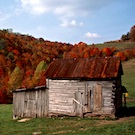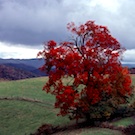Pollution
Pollution is why we're doing this watershed management plan. Pollution is defined in many ways, such as: "The presence in or introduction into the environment of a substance or thing that has harmful or poisonous effects" or "The contamination of air, water, or soil by substances that are harmful to living organisms"
It should be noted that pollution can occur naturally, such as by volcanic eruptions. However, we generally associate pollution as coming from human activities, such as oil spills, excessive light or noise, or from hot water being discharged from a factory. These can be intentional or accidental.
Pretty much everything we do in our daily lives results in some pollution. Much is pretty harmless excess for the cockroach that we are inclined to step on.
How to deal with pollution is controlled by the US Environmental Protection Agency. To regulate the pollution of water, Congress enacted the Federal Water Pollution Control Act (known as the Clean Water Act or CWA). Amendments to that act in 1972 provided EPA the statutory basis for the NPDES permit program and the basic structure for regulating the discharge of pollutants from point sources to waters of the United States. NPDES stands for "National Pollutant Discharge Elimination System." A copy of the CWA can be downloaded from here.
In Maryland, the CWA is enforced by the Department of the Environment Streams and waterbodies are classified as Tier I, II, or III, or something in between, the higher the better the water. The CWA requires the specification of three components in order to classify the state of water:
- Designate uses that set goals for each water body (e.g., recreational use)
- Set criteria that specify the minimum conditions to support the use (e.g., bacterial concentrations below certain concentrations)
- Implement an anti-degradation policy that maintains high quality waters so they are not allowed to degrade to meet only the minimum standards
A Tier II water is an ONRW, an Outstanding National Resource Water. There are very few Tier III waters (see here). It appears that Maryland has no such waters.
Note that it is incumbent upon the Counties to know what waters in their jurisdiction are Tier II. The figure below(click on it to get a large version) shows the classification of streams and water bodies in Garrett County.

Resources:
- Most of the reports can be found on the document archives of the Deep Creek Watershed Management Plan work.
- Summary of the Clean Water Act
- Stormwater Frequently Asked Questions











